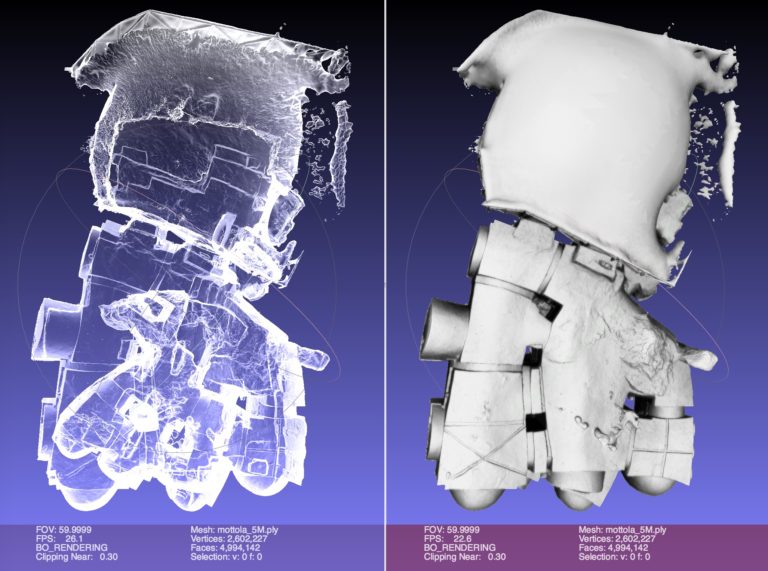
#Meshlab tutorial how to#
If anyone has good hints on how to improve work on those sharper edges, it'd be good to let everyone know. Square buildings and cylinder based tanks look like miserable blobs of goo. Alternatively, drag the file into the project window (the large purple box. Specifically I feel that the points in the mesh are too much dragged down and there's like a 'fall-off' area between points higher up and lower down. Open Meshlab and import Cupule before.obj into Meshlab via File > Import Mesh.
#Meshlab tutorial update#
If anyone has specific hints to improve accuracy, post them in this forum and I'll update the video description to point to this thread. Chances are high that the object will be surrounded by a lot of extra data that does not need to be included in the final mesh. Especially when the intention is to use this for measurements the results should be better. I'm still struggling with the accuracy of the generated mesh through Poisson. I made a video of my efforts today using a test data set from Pix4D, intended to show people how to import the "Bundler.out" file into meshlab and work with it. Some very useful filters include: Filters Cleaning and Repairing Remove Isolated (wrt Diameter) Adjust the max diameter percentage until artifacts are removed. After installing PyMeshLab through pip: import pymeshlab ms pymeshlab. Often, though, we dont start with nice triangle meshes and either are given point-clouds or have to convert to point clouds and then back into triangle meshes. Unlike other programs that are specifically inclined to working with the point set data, MeshLab as the name eludes prefers to use meshes. A mesh is a bunch of triangles, and is often the end goal of any 3D graphics. See the documentation of the MeshSet class for more details. Meshlab (and meshes in general) work on three basic concepts: verticies (points), edges, and faces (triangles). It represents the current state of MeshLab (containing a set of meshes, rasters).

How that works isn't richly documented anywhere. Open MeshLab and load in the mesh: File Import Mesh Select your mesh To clean up your mesh, apply tools in Edit or Filters. The main class of PyMeshLab is the MeshSet class. First, load a mesh with Meshlab, run the filters you want to run, then go to filters > show current filter script and save the script somewhere so you can call it with meshlabserver. I tried figuring out how to work with VSfM and MeshLab and found that Meshlab includes several interesting algorithm for repairing and simplifying meshes.


I tried out VisualSfM and CMPMVS yesterday, but really didn't like the waiting times on the dense point cloud.


 0 kommentar(er)
0 kommentar(er)
